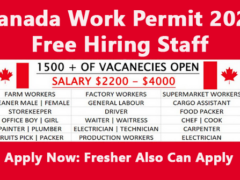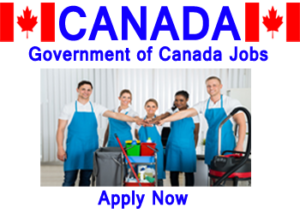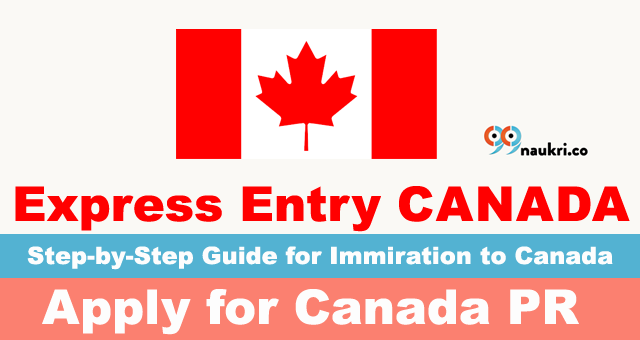How to Get a Work Permit in Canada
Introduction: Overview of Working in Canada and the Importance of a Work Permit
Dreaming of working in the lush landscapes of Canada or diving into the vibrant urban life of its cities? It’s a dream shared by many across the globe. Canada, known for its high quality of life, inclusive culture, and robust economy, is a top destination for international job seekers. But before you start your professional journey in the Great White North, there’s one critical piece you need: a work permit.
Why is a work permit so essential? It’s simple. This legal document is your ticket to entering the Canadian workforce legitimately. It ensures you’re working in Canada legally, protecting your rights as an employee. Without it, you could face legal issues and jeopardize your chances of working in Canada in the future. So, it’s not just a formality, but a vital step in your career journey in Canada.
Eligibility Criteria: Basic Requirements for a Work Permit
Let’s talk about the first steps toward your Canadian work dream: the eligibility criteria for a work permit. Think of these as your base camp before climbing the summit of Canadian employment. The basic requirements are straightforward but crucial:
- Proof of Exit: Canada loves welcoming international workers, but you must convince them you’ll leave when your permit expires. This means having a return ticket home or enough funds for one.
- Financial Stability: You’ll need to prove you have enough money to support yourself (and any dependents) while in Canada. This shows you won’t be a burden on the country’s social welfare system.
- Clean Record: A criminal background can be a red flag. Canada requires a clean police record for incoming workers, ensuring the safety and security of its residents.
- Health Checks: A clean bill of health is often necessary. Some applicants must undergo a medical examination to ensure they’re not a threat to public health.
- No Threat to Employment Opportunities: You must also show that your employment won’t take away jobs from Canadians or permanent residents, especially important for certain types of work permits.
- Employer Compliance (For Employer-Specific Work Permits): If you’re applying for an employer-specific work permit, your employer in Canada must also meet certain conditions and might need to secure a Labour Market Impact Assessment (LMIA) to hire you.
Types of Work Permits in Canada
When it comes to working in Canada, understanding the types of work permits available is like knowing the right tools for a job. There are primarily two kinds of work permits: Open Work Permits and Employer-specific Work Permits. Each serves a different purpose and comes with its own set of rules.
- Open Work Permits: Imagine a key that opens multiple doors. That’s an Open Work Permit for you. It allows you to work for any employer in Canada, except for those companies that don’t comply with labor requirements or are involved in services like escort services, erotic massage, or exotic dancing. The beauty of this permit is its flexibility – you’re not tied to one employer or location. It’s ideal for those who want the freedom to explore different job opportunities across Canada.
- Employer-specific Work Permits: As the name suggests, these are tailor-made. This permit links you to a specific employer, job, and location in Canada. It’s based on a job offer you receive, and your employer might need to get a Labor Market Impact Assessment (LMIA) before you can apply. This permit is like a custom suit – designed specifically for your employment situation in Canada.
The Application Process: A Step-by-Step Guide
Navigating the application process for a Canadian work permit can feel like plotting a course through unfamiliar territory. Here’s a step-by-step guide to make the journey smoother:
- Determine the Type of Work Permit: Your first step is to figure out which type of work permit suits your situation – open or employer-specific.
- Gather Documentation: This includes your job offer (for employer-specific permits), proof of qualifications, and identity documents. Different permits might require additional or different documentation.
- Complete the Application: You can find the application forms on the Immigration, Refugees and Citizenship Canada (IRCC) website. Be sure to fill out the right form based on the type of work permit you need.
- Pay the Fees: Application fees vary depending on the type of permit and your nationality. Ensure you check the latest fee requirements on the IRCC website and make the payment accordingly.
- Submit the Application: You can submit your application online or, in some cases, at a Visa Application Center. Make sure you follow the submission guidelines provided by the IRCC.
- Wait for Processing: The processing time can vary greatly depending on various factors, such as the type of permit, your country of residence, and the completeness of your application.
- Provide Additional Information or Documents if Requested: Sometimes, the IRCC might ask for more information or documents. Be responsive and provide what’s required promptly.
- Receive Your Work Permit: Once your application is approved, you’ll receive your work permit. For entry into Canada, you may also need a Temporary Resident Visa (TRV) or an Electronic Travel Authorization (eTA), depending on your nationality.
- Prepare for Arrival in Canada: Once you have your permit, start planning your move. Remember, the work permit stipulates the conditions of your employment in Canada, so adhere to them strictly.
Necessary Documents: List of Essential Documents
Getting your documents in order for a Canadian work permit is like packing for a big trip – you need to ensure you have everything essential. Here’s a checklist to help you get started:
- Completed Application Form: The cornerstone of your application. Make sure it’s filled out accurately and completely.
- Job Offer Letter: For an employer-specific work permit, you’ll need a letter from your employer in Canada detailing the job offer.
- Labor Market Impact Assessment (LMIA): If required for your job, this is a crucial document.
- Proof of Eligibility for the Job: This could include copies of your education credentials, work experience letters, or professional certifications.
- Identity Documents: These typically include a valid passport and two recent passport-sized photos.
- Proof of Financial Support: You may need to show that you have sufficient funds to support yourself (and any dependents) during your stay in Canada.
- Medical Exam: In some cases, you might need to undergo a medical examination by an approved panel physician.
- Police Certificates: You might need to provide police clearance certificates to prove you have no criminal record.
- CV/Resume: Demonstrating your work history and skills.
- Fee Payment Receipt: Proof that you’ve paid the necessary application fees.
Labor Market Impact Assessment (LMIA): Explanation and Significance
The LMIA is like a bridge that connects Canadian employers with foreign workers. It’s a document that your Canadian employer might need to obtain before hiring you. The LMIA process ensures that the hiring of a foreign worker will not negatively impact the Canadian labor market. Essentially, your employer must prove that there is a genuine need for a foreign worker to fill the job and that no Canadian worker or permanent resident is available to do the job.
Employer Compliance: Role of the Employer in the Process
In this journey, your employer is not just a spectator but a key player. For employer-specific work permits, the role of your employer is significant. Here’s what they are typically responsible for:
- Obtaining the LMIA (if required): They need to apply for and receive a positive LMIA from Employment and Social Development Canada (ESDC).
- Providing a Job Offer Letter: A detailed offer of employment is essential for your work permit application.
- Compliance with Employment Standards: They must adhere to national and provincial labor laws, ensuring fair treatment and working conditions.
- Payment of Wages: They are responsible for paying you appropriately as per the job offer and LMIA (if applicable).
- Record Keeping: Employers need to maintain records proving their compliance with the conditions of the LMIA and work permit.
Application Fees: Cost of Applying for a Work Permit
The cost of applying for a work permit in Canada is an investment in your future career in the country. As of my last update, the fee structure is as follows:
- Work Permit Application Fee: This is the standard fee for processing your work permit application. It typically costs around CAD 155 for an individual applicant.
- Open Work Permit Holder Fee: If you’re applying for an open work permit, there’s an additional fee of CAD 100.
Remember, these fees are subject to change, so it’s a good idea to check the latest fees on the Immigration, Refugees and Citizenship Canada (IRCC) website before applying.
Processing Time: Average Time for Processing Applications
The processing time for work permit applications can be as unpredictable as the weather. It varies based on several factors such as the type of application, the specific visa office handling your application, and the completeness of your application. Generally, processing times can range from a few weeks to several months. The IRCC website provides updated processing time estimates, which can give you a ballpark idea of how long you might need to wait.
Extending Your Work Permit: How and When to Apply for an Extension
Deciding to extend your stay in Canada for work is like wanting to continue a rewarding journey. Here’s how to apply for an extension of your work permit:
- Check Expiry Date: Start by checking the expiry date on your current work permit. It’s recommended to apply for an extension at least 30 days before your current permit expires.
- Determine Eligibility: Ensure that you’re still eligible to work in Canada under the same conditions of your existing work permit.
- Gather Required Documents: This may include your current work permit, job offer letter, LMIA (if applicable), and any other documents that support your application.
- Complete Application for Extension: You can find the application forms on the IRCC website. Fill them out accurately, ensuring all information is up to date.
- Pay Fees: Just like the initial application, you’ll need to pay fees for processing the extension. Make sure to get a receipt.
- Submit the Application: You can usually submit your extension application online through the IRCC portal. Ensure all documents are submitted and fees are paid.
- Maintain Status: While your extension is being processed, you’re allowed to stay in Canada under the same conditions of your current permit until a decision is made, provided you applied before the expiry date.
Changing Jobs or Employers
Switching jobs or employers in Canada while on a work permit is akin to navigating a new chapter in your career journey. Here’s how to handle it:
- Understand the Type of Your Permit: If you have an open work permit, you can change employers without applying for a new permit. However, with an employer-specific work permit, the process is different.
- Apply for a New Work Permit: For an employer-specific work permit, you need to apply for a new permit to work for a different employer or in a different job.
- Get a New Job Offer: You’ll need a job offer from your new employer.
- Labor Market Impact Assessment (LMIA): If required, your new employer should obtain a positive LMIA.
- Submit Your Application: Apply for a new work permit with the new job offer and, if applicable, the LMIA. Include other necessary documents as per IRCC requirements.
- Wait for Approval: Continue with your current employer until your new work permit is approved.
Common Mistakes to Avoid
To ensure a smooth application process for your Canadian work permit, watch out for these common pitfalls:
- Incomplete Application: Missing information can delay or even derail your application. Double-check to ensure every question is answered and every required document is included.
- Incorrect Fee Payment: Ensure you pay the correct fee amount. An incorrect fee can lead to your application being returned or refused.
- Outdated Forms: Always use the latest forms from the IRCC website. Outdated forms can be grounds for refusal.
- Incorrect Job Details: For employer-specific permits, ensure all job details are accurate and match the job offer and LMIA.
- Not Adhering to Timelines: Apply for renewals or changes well before your current permit expires to maintain your legal status in Canada.
Work Permit Renewal
Renewing your work permit is an important step to maintain your legal work status in Canada. Here’s the renewal process:
- Check Your Eligibility: Make sure you’re eligible for renewal. Some permits have restrictions on renewals.
- Apply Before Your Current Permit Expires: Ideally, apply at least 30 days before the expiry date. You can stay in Canada under implied status while your application is processed, provided you applied before the expiration of your current permit.
- Gather Required Documents: This might include your current work permit, job offer letter, LMIA (if applicable), and any other relevant documents.
- Complete the Application: Fill out the application form for a work permit extension. Be sure to use the most current form from the IRCC website.
- Pay the Renewal Fee: Pay the necessary fee and include the receipt with your application.
- Submit Your Application: Submit the application online or as directed by the IRCC.
Pathway to Permanent Residency: How a Work Permit Can Lead to Permanent Residency
Holding a work permit in Canada can be a stepping stone to one of the most coveted statuses: permanent residency. Here’s how your Canadian work experience can pave the way:
- Canadian Experience Class (CEC): This is a popular pathway for those with work experience in Canada. If you’ve worked in Canada for at least one year, you may be eligible to apply through the Express Entry system under the CEC.
- Provincial Nominee Programs (PNPs): Many Canadian provinces have programs that nominate individuals for permanent residency based on their work experience, skills, and job prospects in that province.
- Bridging Open Work Permit (BOWP): If you’ve applied for permanent residency and your current work permit is about to expire, you might be eligible for a BOWP. This allows you to keep working while your PR application is processed.
- Work Experience Points in Express Entry: Work experience in Canada can earn you additional points in the Express Entry Comprehensive Ranking System (CRS), increasing your chances of receiving an invitation to apply for PR.
Legal Assistance: How to Get a Work Permit in Canada
When to Seek Help from Immigration Lawyers
Navigating the complexities of immigration laws and processes can sometimes be overwhelming. Here are scenarios when you might consider seeking legal assistance:
- Complex Cases: If your case involves legal complexities such as inadmissibility issues or previous refusals, a lawyer can provide valuable guidance.
- Application Uncertainty: If you’re unsure about which immigration program you qualify for or how to optimize your application for success.
- Paperwork and Documentation: Immigration lawyers can help ensure that all your paperwork is in order, correctly filled out, and submitted on time.
- Representation: Lawyers can represent you in communications with Canadian immigration authorities, ensuring your case is presented effectively.
Conclusion: How to Get a Work Permit in Canada
Final Thoughts and Advice
Embarking on the journey to work in Canada and possibly transition to permanent residency is an exciting but complex adventure. The key is to approach it with thorough preparation, patience, and a clear understanding of the requirements and processes. Stay informed, stay organized, and don’t hesitate to seek professional advice when needed.
Remember, each step you take in this journey brings you closer to your goal of working and potentially making a life in Canada. Embrace the opportunities and challenges alike, and you might just find yourself calling Canada your new home sooner than you think!
Latest LIMA Approved Jobs in Canada
| Position | Apply Link |
| Factory Worker | Click Here |
| Supermarket Jobs | Click Here |
| Farm worker | Click Here |
| Driver | Click Here |
| Cook | Click Here |
| Production Worker | Click Here |
| Housekeeper | Click Here |
| Truck Driver | Click Here |
| Entry Level Jobs | Click Here |














